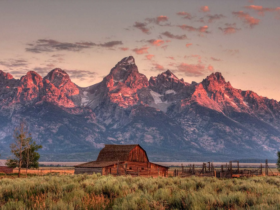The new house is a radiance, it is a dream for many people who dreamed of their apartment, it is a lot, much, much. But, time passes and, the new house becomes old, which means that something begins to break in it and deteriorates. And, walls – no exception. Under the pressure of many thousands of tons of building material, they crack and deform. The joints between concrete slabs in a reinforced concrete house are especially affected. And in a brick house, the problem of layers of cement mortar between bricks also becomes relevant. The result of everything – the wall becomes wet, and temperature effects from the outside – more and more. You need to do something with the wall. It needs to be isolated from the external environment, in other words – insulate.
Modern technologies allow isolation or insulation of walls and facades of houses in a matter of days and for little money. Moreover, there is nothing complicated and scientific in this. In this process, both modern and long -forgotten building materials are involved. For insulation of the wall of the house you will need:
Foam or polystyrene foam.
Wide and toothed spatulas.
Perforator.
Narrow knife.
Hammer.
Adhesive mixture.
Reinforcing mesh.
Buckets, water and fasteners.
This is only the main list of materials, but, most importantly, this is the opportunity to work at altitude. And for this we need, either construction forests, or climbing equipment, and, accordingly, and – skills. Choose – to each individual customer, but – it is better to contact specialists with skills, both builders and climbers.
The technology of wall insulation is both simple and requires the presence of both a certain experience and construction skills. So, to insulate the wall you need:
Lease the wall.
Generate the surface of the wall.
Apply markings.
Fix the lower supporting fastener.
Glue the foam plate on the wall.
After the solution dries, the foam slabs are rigidly fixed on the wall using mushroom -shaped dowels.
A layer of glue is applied to the foam.
Into glue, on an overlap up to 10cm, a reinforcing mesh is applied.
A glue layer is applied on top of the mesh.
A layer of plaster is applied.
The plaster is primed and after drying is painted in the desired color.
Such insulation, as stated on the site




